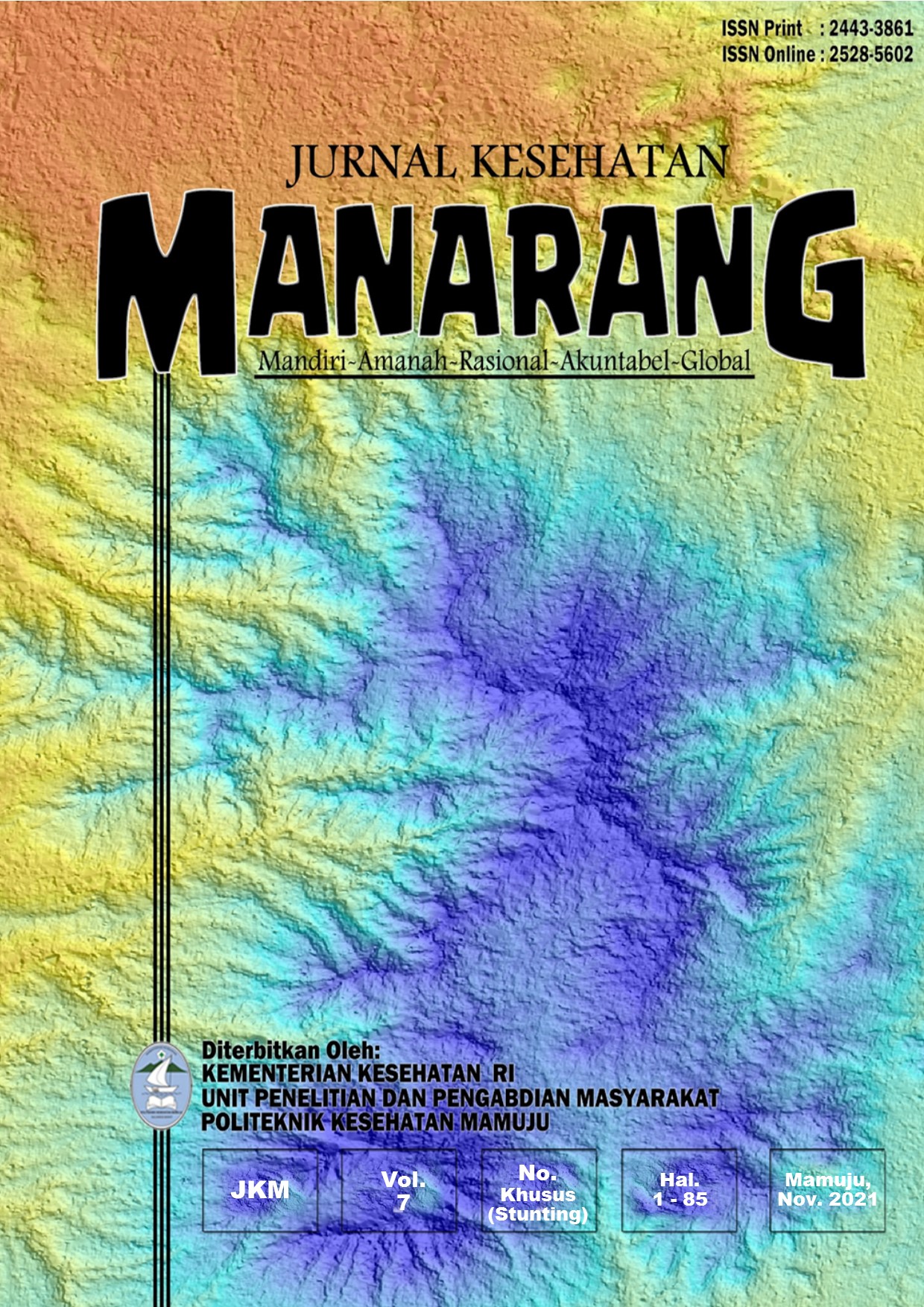Abstract
Stunting is a global problem faced by the world and often occurs in children aged 3 – 5 years. The negative impact that will be caused by stunting in the 3-5 year age period in the long term is the disruption of children's psychosocial and motoric development. This study aims to see the relationship between motor and psychosocial development with stunting in preschool children (3 – 5 years) at the Baluse Health Center, Sigi Regency. The research design used was a cross-sectional study that assessed the relationship between motor and psychosocial development and stunting in preschool children (aged 3 – 5 years). The population used in this study were all preschool children (aged 3 – 5 years) with stunting in the Puskemas Baluse. The number of samples was 25 respondents who met the criteria for the research sample. The research was carried out at the Baluse Health Center, Sigi Regency from October 5 to 20, 2020. The research instrument used a questionnaire to measure the motoric and psychosocial development of children, while the measurement of stunting used microtoise and children's scales. The closeness and strength of the relationship between the two variables in this study used the Chi-Square statistical test. The results showed that most of the motor and psychosocial developments were in the abnormal category. The test of the relationship between motor and psychosocial development and stunting was carried out using the Chi-Square statistical test. The results showed that the P-value = 0.016 is smaller than the alpha value of 0.05, this indicates that stunting has a significant relationship with the motoric and psychosocial development of children. This study concludes that stunting has a relationship with motor and psychosocial development of children aged 3 – 5 years. Stunting children mostly have an abnormal motor and psychosocial development.


